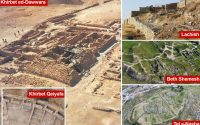Wild animals thrive in DMZ zone between North and South Korea, rare photos show
Newly released photos offer a rare glimpse into the abandoned demilitarized zone between North and South Korea, revealing rare wildlife and plant life flourishing in the space largely untouched by humans.
Endangered animals and unique flora are thriving in the 160-mile-long strip of border land that has been largely deserted by humans for decades.
A total of 6,168 wildlife species have created a home in the DMZ area, where landmines buried underground are a reminder of the Korean War that ended in armistice some 70 years ago.

To mark the anniversary of the armistice and creation of the DMZ, Google Arts & Culture — in partnership with the National Institute of Ecology — released never-before-seen images of the flourishing wildlife taken within the zone.
“After the Korean War, the DMZ had minimal human interference for over 70 years, and the damaged nature recovered on its own,” the Google project site said. “As a result, it built up a new ecosystem not seen around the cities and has become a sanctuary for wildlife.”

The photographs were taken by unmanned eco cameras installed in the zone by the National Institute of Ecology to study life there.
The striking images offer a look behind the curtain of life without humans in the zone, where 38% of Korea’s 267 endangered species live.
Endangered cranes, mountain goats, musk deer, golden eagles, Manchurian trout and trout all call the buffer zone between the two countries home, according to the images.

An Asiatic black bear was spotted on camera for the first time in 20 years within the zone in one of the images, researchers said.
Environmental advocates have long called for the creation of an official environmental protection for the DMZ. Peace talks between North and South Korea in 2018 raised hopes for one, but the talks fell through.


